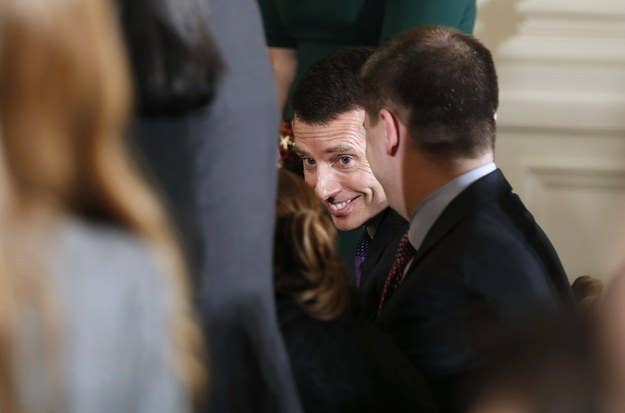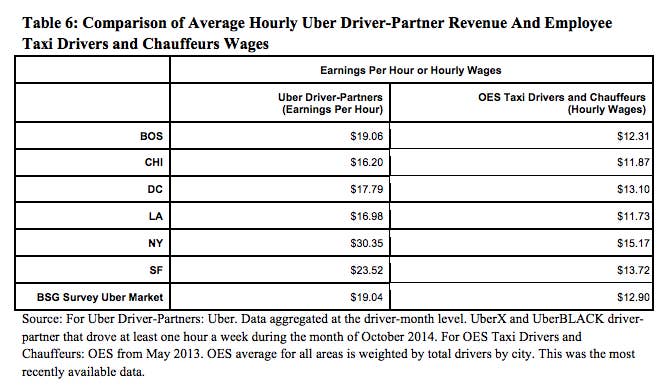
Uber published a study Thursday suggesting its drivers get paid twice as much as yellow cab drivers, ammunition for the case it's making to the U.S. Conference of Mayors, where the company's senior vice president of policy and strategy, David Plouffe, will be speaking.
The timing of the study, Plouffe told BuzzFeed News, had little to do with the conference. Instead, he says, the study was made possible by the substantial influx of new drivers on the platform — nearly 40,000 in the United States just last month.
"We are growing and becoming a larger part of not just the transportation structure, but a larger part of the economy," Plouffe said.
The company and its major competitors have faced a spectrum of regulatory battles (and in some cases victories) across the country. So Plouffe, a former campaign manager and political strategist for Barack Obama, plans to use the data in the study to try to convince the mayors at the conference of Uber's positive impact in the markets it serves.
"I do think we have had a lot of recent [regulatory] success [and a reason for that] is that people are seeing the economic impact," Plouffe said. "For mayors out there who see this study we're like, one of the largest — in many cities the largest — new employer. I think it's important for people to understand that's what this survey says. Uber is really becoming an important part of the city fabric."
He continued: "We're certainly going to make the case tomorrow that Uber is reducing congestion [through UberPool], [and is] good for the economy generally, then you have the driver economics sword."
According to the study, in some of the major markets Uber drivers' earnings per hour are "at least as much as taxi drivers and chauffeurs, and in many cases more than taxi drivers and chauffeurs."
Among the biggest disparity in Uber driver earnings versus taxi wages of the markets given was in New York. According to the study, Uber drivers in New York earned $30.35 an hour, while taxi drivers and chauffeurs only made $15.17.
That figure, however, comes with the caveat that Uber drivers are not reimbursed for driving expenses: "These costs vary for each driver-partner, and drivers may be able to partially offset their costs by deducting work-related expenses from their income for tax purposes."
According to the report, the authors plan to research the precise quantification of drivers' costs in the future. "Nonetheless," it reads, "the figures suggest that unless their after-tax costs average more than $6 per hour, the net hourly earnings of Uber's driver-partners exceed the hourly wage of employed taxi drivers and chauffeurs, on average."

The study was co-authored by Dr. Jonathan Hall, Uber's head of policy research, and Alan Krueger, the Bendheim professor of economics and public affairs at Princeton University and a former chair of President Obama's Council of Economic Advisers and member of President Obama's cabinet. (Kreuger and Plouffe worked together during their respective tenures on the Obama administration.)
To perform the study, the authors examined anonymized information from Uber's database such as driving histories, schedules, and earnings, as well as a survey of 601 drivers in 20 markets conducted by Benenson Strategy Group in December 2014. (According to the report there was an 11% response rate.)
The study, which dissected the demographics of drivers that responded, concluded that in terms of both age and education the pool of Uber drivers that were analyzed were more similar to the general workforce than to taxi drivers and chauffeurs. According to the report: "Nineteen percent of Uber's driver-partners are under age 30, and 24.5% are age 50 or older. By contrast, taxi drivers and chauffeurs are substantially older, with nine percent under age 30, and 44% age 50 or above."
The authors suggested that the age disparity between Uber and taxi drivers could be because presented with a new opportunity like Uber, older workers may be less likely to change jobs, "but it may also reflect entry barriers into the taxi driver and chauffeur professions that make it more difficult for younger people to obtain such jobs."
The study also found that 36.9% of Uber drivers surveyed had a college degree and 10.8% had a postgraduate degree, compared to respectively 14.9% and 3.9% of taxi drivers and chauffeurs.
Interestingly, the study also found that 14% of Uber's drivers are women, "which exceeds the percentage of taxi drivers and chauffeurs who are women in those markets (8%), but is less than the share of women in the workforce overall."

The authors took great care to distinguish the pool of Uber drivers surveyed from taxi drivers and chauffeurs because they felt that in order to draw conclusions about Uber affecting the economy overall, they had to contrast it with what is presumably its biggest competitor, Krueger said. There was little mention, however, of other ride-share companies.
According to the study, the primary reason drivers stay with the platform is the flexibility being an Uber driver provides them — a flexibility that can arguably be found on other platforms. While the report found that in December 2014 there were a total of 162,037 active drivers on the platform, the report also stated that of the drivers pooled, 35% said if Uber were no longer available they would join another ride-share company. However, that finding does not cause Plouffe much alarm.
"What it shows is that people really like the ride-sharing platform, it speaks to the overall sector," he told BuzzFeed News. "I think what people find is that we have the highest amount of demand [of ride-share companies]."
He continued: "Uber is the most efficient, they [do] the most trips. And there have been independent studies that found the income opportunity is greater."
"I think the survey and data on earnings paints a favorable picture," Krueger told BuzzFeed News. "Uber, in a very short time span, provided opportunities for 160,000 drivers. The innovation here is that technology is increasing demand."
As for how Plouffe hopes this will help on the regulatory side of things: "On the planning side I think this gives mayors a better sense of who is driving for Uber. The data can help them make smarter decisions."
